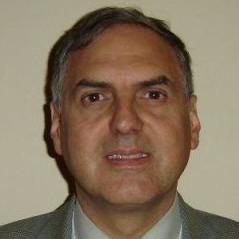“Palaeolimnological Archives”: Unpacking Secrets of Ancient Lakes through the Lens of Geochemistry, Mineralogy and Petrology
A special issue of Minerals (ISSN 2075-163X). This special issue belongs to the section "Environmental Mineralogy and Biogeochemistry".
Deadline for manuscript submissions: closed (31 July 2023) | Viewed by 3621
Special Issue Editors
Interests: organic geochemistry; stable isotope geochemistry
Interests: organic petrology of unconventional rocks; trace element geochemistry; source rock analysis; thermal maturity
Special Issues, Collections and Topics in MDPI journals
Special Issue Information
Dear Colleagues,
Lakes play a major role in the evolution of ecosystems, the development of geology, and the generation of fossil fuels. They are an integral part of the elemental (carbon, nitrogen, phosphorus, and sulfur) (bio)geochemical cycles on Earth. Aqueous chemistry and mineralogy in lakes may be the manifest of chemical and biological reactions in the depths, and are targeted materials to reconstruct paleoenvironments and paleoclimates. Organic matter deposited in lacustrine environments may be the precursor of crude oil and natural gas. This Special Issue collates cross-disciplinary studies focused on the geological and biological processes of lacustrine environments. Our ultimate goal is to decipher the records preserved in the lake water, rocks, and sediments using different approaches, to advance our knowledge of (bio)geochemical processes under lacustrine/sublacustrine conditions, and to assess the impact of those processes on the history of the Earth. Contributions describing diverse approaches from different research areas are welcome, including field studies, laboratory experiments, and advanced analytical characterizations (stable isotopes, geothermometry, biomarkers, and other geochemical proxies). The topics may include, but are not limited to: case studies of lake drill cores; the generation of petroleum and natural gas with sapropelic kerogen; mineral-catalyzed abiotic and microbial processes; paleoenvironment/paleoclimate reconstruction using carbonate clumped isotope thermometry; the role of minerals and fluids in environmental limnology and ecosystem evolution; and mass transfer and elemental cycles in terrestrial hydrothermal systems.
Dr. Qi Fu
Dr. Thomas Gentzis
Guest Editors
Manuscript Submission Information
Manuscripts should be submitted online at www.mdpi.com by registering and logging in to this website. Once you are registered, click here to go to the submission form. Manuscripts can be submitted until the deadline. All submissions that pass pre-check are peer-reviewed. Accepted papers will be published continuously in the journal (as soon as accepted) and will be listed together on the special issue website. Research articles, review articles as well as short communications are invited. For planned papers, a title and short abstract (about 100 words) can be sent to the Editorial Office for announcement on this website.
Submitted manuscripts should not have been published previously, nor be under consideration for publication elsewhere (except conference proceedings papers). All manuscripts are thoroughly refereed through a single-blind peer-review process. A guide for authors and other relevant information for submission of manuscripts is available on the Instructions for Authors page. Minerals is an international peer-reviewed open access monthly journal published by MDPI.
Please visit the Instructions for Authors page before submitting a manuscript. The Article Processing Charge (APC) for publication in this open access journal is 2400 CHF (Swiss Francs). Submitted papers should be well formatted and use good English. Authors may use MDPI's English editing service prior to publication or during author revisions.
Keywords
- aqueous chemistry
- ecosystems
- elemental cycles
- hydrothermal systems
- isotopes
- lacustrine environment
- environmental limnology
- microbial processes
- mineral alteration
- natural gas
- paleoclimate
- paleoenvironment
- petroleum
- organic matter
- trace element proxies and stable isotopes
- organic matter pyrolysis and kinetics
- paleodepositional envionment conditions and paleoclimate
- sulfur speciation






